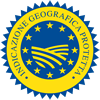Description
Sicilia PGI extra virgin olive oil is obtained from the following olive tree varieties: Biancolilla, Cerasuola, Moresca, Nocellara del Belice, Nocellara Etnea, Ogliarola Messinese and Tonda Iblea (main cultivars), and Aitana, Bottone di gallo, Brandofino, Calatina, Cavalieri, Crastu, Erbano, Giarraffa, Lumiaru, Marmorigna, Minuta, Nasitana, Nerba, Nocellara messinese, Olivo di Mandanici, Piricuddara, Santagatese, Vaddarica, Verdello, Verdese, Zaituna (secondary cultivars), and their synonyms, which must make up at least 95% of the groves, individually or combined.
Production Area
The production area for Sicilia PGI extra virgin olive oil is within the entire administrative territory of the Sicily region.
Production Method
The olives must be harvested directly from the tree, either manually or mechanically. The use of products to encourage early falling or abscission is forbidden. It is prohibited to use olives that have naturally fallen on the ground or into permanent nets. The olives must be carefully transported in crates, boxes or other rigid containers in order to promote aeration, thereby avoiding overheating and fermentation. Before milling, the olives are defoliated and washed with water at room temperature. Only mechanical and physical processes can be used to extract the oil. The maximum yield in the oil can be no higher than 24%. All of the oil extraction processes must be carried out within 48 hours of harvesting, in mills situated within the administrative territory of the Sicily region. The harvesting of olives destined for the production of Sicilia PGI is carried out in the period between September 1st and January 30th of the following year.
Appearance and Flavour
Sicilia PGI extra virgin olive oil has a greenish-gold colour and a mild fruity smell with hints of green tomatoes, artichoke and fresh grass. The perception of bitterness and piquancy varies from faint to mild.
History
The link between the territory, olive trees and the Sicilian culture, has created a product with a reputation that has been confirmed by numerous awards and recognition from both industry experts and consumers of Sicilia PGI extra virgin olive oil. The Greeks introduced olive growing into Sicily between the 9th and 8th centuries BC, having learnt from the Phoenicians. There is a legend saying that it was the goddess Ceres who taught the shepherd Aristeo about growing olive trees and pressing oil in Sicily.
Gastronomy
Extra virgin olive oil should be kept in a cool place away from light and strong odours, in stainless steel, dark glass or earthenware recipients, in order to prevent the product deteriorating due to exposure to light. The Mediterranean diet, a nutritional model inspired by the typical southern Italian population and Greece, uses olive oil as the only condiment in various dishes, especially now that we know the beneficial properties it offers our bodies. The character of Sicilia PGI oil, with its hints of artichoke, green tomato and fresh grass, adds flavour to grilled fish or meat, cereal soups and vegetable broths.
Marketing
The product is marketed as Sicilia PGI extra virgin olive oil. It is sold in recipients with a maximum capacity of 5 litres. It is compulsory to indicate the harvest year of the olives and display the European PGI symbol on the label. Documentable references to the production methods of individual producers are permitted, for example: “monovarietale” (single-variety) followed by the name of the cultivar used, “raccolto a mano” (hand-picked), etc.
Distinctive Features
In terms of biodiversity, Sicily’s geographical location and territorial discontinuity with the European continent has created a unique range of olive varieties that are differentiated from other olive growing areas. The pedoclimatic and human factors related to the territory, create the sensory profile of Sicilia PGI extra virgin olive oil.






![[VIDEO] Whoopi Goldberg porta i prodotti DOP IGP italiani su ABC News](https://www.qualivita.it/wp-content/uploads/2024/11/ABC-News-Whoopi-goldberg-parmigiano-reggiano-210x118.jpg)












